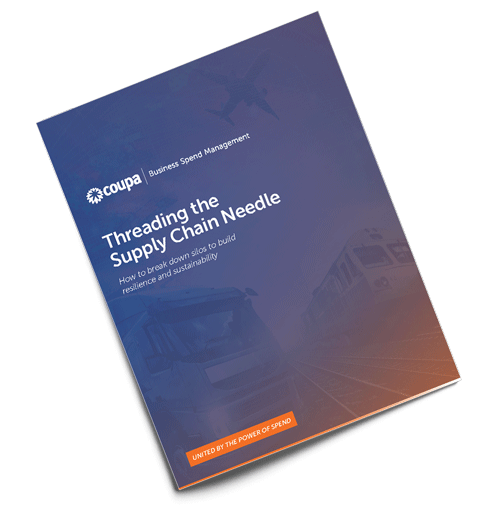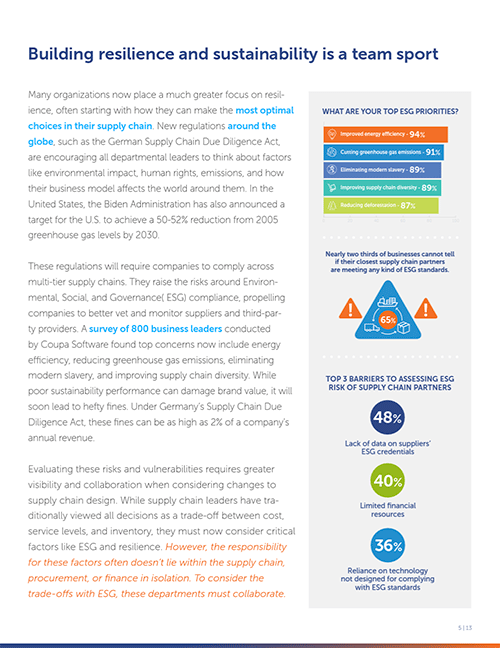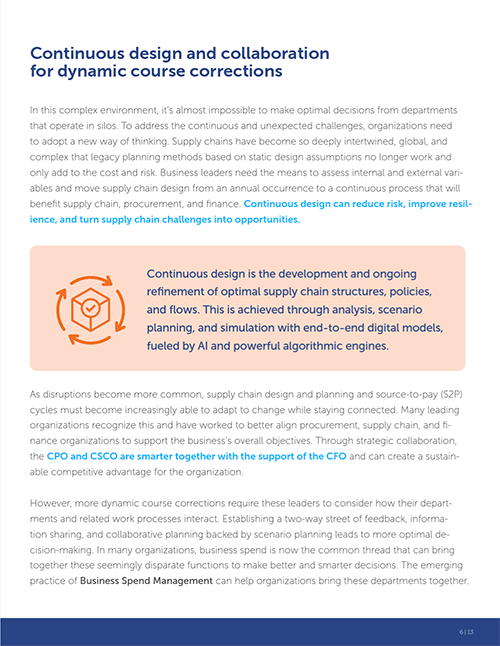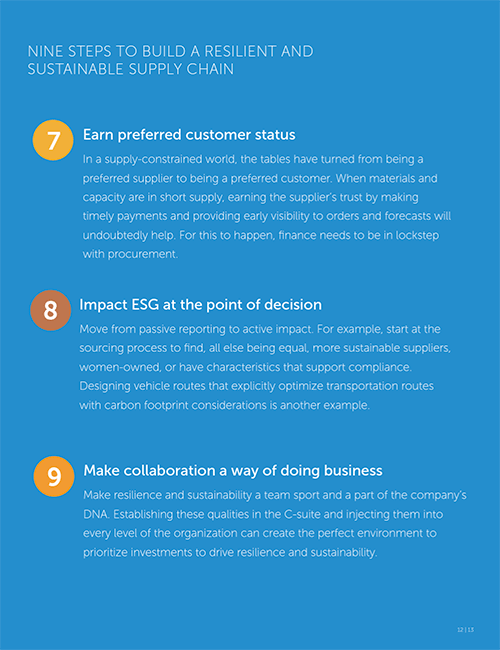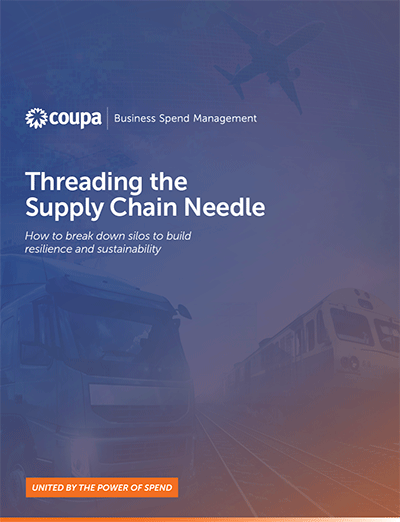Threading the Supply Chain Needle
Get practical steps to improving supply chain resilience and sustainability in this e-book. By enabling supply chain, procurement, and finance teams to work together, your organization can make smarter, faster supply chain decisions, and thus minimize risk and maximize profitability and sustainability.
Learn how to break down departmental silos and design resilient and sustainable supply chains.
Download this e-book to learn:
- Why collaboration between procurement, supply chain, and finance is essential for supply chain resilience and sustainability
- Practical steps to breaking down silos and improving collaboration across these various teams
- How to build a more resilient supply chain and make smarter, faster decisions to improve sustainability
With supply chain disruption becoming more and more common, and with the implementation of new ESG regulations, your organization's supply chain, procurement, and finance teams must join forces to improve visibility into real-time data and make smarter, faster decisions to improve supply chain resilience.
With the right technology and processes, it is possible to overcome the challenges that usually prevent these teams from collaborating. As a result, you can guide your organization to greater profitability, resilience, and sustainability.
FAQ
Meanwhile, nearly two-thirds of businesses cannot tell if their closest supply chain partners are meeting any kind of ESG standard.
Within the supply chain, there are four main categories of spend. First are the operational expenses for sourcing, making, and delivering products. The second category of spend is for working capital, which is related to building inventory buffers and safety stock. A third category is capital investments that facilitate growth and expansion, such as investment in new facilities or the expansion of capacity. The final category is MRO (Maintenance, Repair, & Operations) materials and parts needed to support production and distribution activities.
